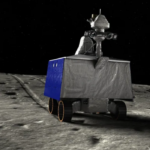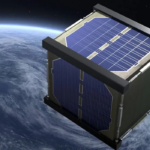In this article, we’ll explore the concept of building a massive, ring-shaped world in space. Known as a “ringworld,” this structure could provide an artificial living area in space, similar to a space station but on a much larger scale. Imagine a ring that could potentially be 1,000 kilometers or more in diameter. The idea behind a ringworld is to solve the problems of living space—either due to a lack of habitable planets or the inability to use space on already-existing planets. But does the concept of building such a world really make sense? Let’s dive into the details of its design, potential uses, and the challenges that come with it.
Placement of the Ringworld
A ringworld can be placed around a planet or a star, serving two primary purposes:
- Artificial Gravity: The ring’s rotation would generate centrifugal force, providing artificial gravity to its inhabitants.
- Orbital Positioning: The ring could rotate around a planet or star for various practical reasons, such as space constraints on a planet or the need for additional space.
- Around a Planet: If Earth’s surface becomes overcrowded or if there is a need for additional infrastructure like storage, agriculture, or defense platforms, a ring could be constructed around Earth. It would be especially useful in the case of specialized facilities that cannot be accommodated on the planet’s surface.
- Around a Star: If planets in a solar system aren’t suitable for settlement, or if humanity needs additional living space, a ring could be built around a star—creating a Dyson-like structure. A Dyson ring is similar to a ringworld, where a ring encircles a star, gathering energy and providing space for habitation.
Regardless of its placement, the ringworld would need to be protected from the intense heat and radiation from the star or the planet it orbits. Advanced materials and protective mechanisms would be required to shield its inhabitants.
Reason for Creation
There are two primary reasons for creating a ringworld:
- Creating Living Space: As Earth’s population grows, there may be a need to expand living spaces beyond the planet itself. A ringworld could provide a solution by offering an entire city or colony in space. The design of such a structure would need to ensure safety from the dangers of space, such as vacuum and radiation, while providing the comforts of modern life.
- Safety: A ringworld must be able to provide safe, secure living conditions for its inhabitants, considering the dangers of space.
- Food Production: It must include facilities to produce food—not just for sustenance but also for quality of life. Tasty and nutritious food would keep people happy and healthy in a space environment.
- Employment: Inhabitants would need jobs—whether it’s maintaining the structure, working in factories, or conducting research.
- Modern Services: A ringworld would need to offer all the services of a modern city, including hospitals, schools, law enforcement, and recreational facilities.
- Additional Space for Other Purposes: A ringworld can serve as an auxiliary structure for various uses beyond living space. For example, we could build a massive ring around Earth to house storage facilities, factories, research centers, or shipyards. By positioning the ring at Earth’s equator, it could synchronize with Earth’s rotation, making it a practical location for connection via a space elevator.
Availability of Resources
Building a ringworld requires advanced resources and materials. The challenges of construction are immense, and the project would require unprecedented amounts of materials, talent, and financial resources.
- Materials: The structure must be built with extremely strong materials that can withstand the immense forces involved. At the same time, these materials should be lightweight and cost-effective. The ringworld must provide protection from radiation and maintain the artificial gravity created by its rotation. Potential materials include metals like titanium and tungsten, ceramics, and advanced composites like carbon fiber and nanotubes.
- Money: The financial cost of such a project would be astronomical—likely the most expensive endeavor ever undertaken by humanity. Estimating the cost today is nearly impossible, but the expense of materials alone would be far beyond what humanity has spent on any single project so far.
- Talent: The construction of a ringworld would require an enormous amount of expertise across numerous fields. Space construction, space travel, and safety in space stations are areas where we currently lack sufficient experience. Additionally, handling unforeseen challenges in space—like fire safety or material degradation—would require specialized knowledge and skill.
- Technology: We would need advanced technology in areas such as material science, space transportation, and orbital construction techniques. Furthermore, space debris management would be a crucial challenge. Developing the required technologies and mastering the construction techniques would be a multi-generational effort, if not impossible in the short term.
Challenges and Feasibility
Building a ringworld is currently beyond our technological capabilities. With our current understanding of space construction and materials, it’s difficult to imagine how such a vast and complex structure could be created. Beyond the technical challenges, the political and financial hurdles would be equally daunting. A project of this magnitude would require international cooperation on a scale never before seen.
Even if we could overcome these obstacles, constructing such a large-scale project would require innovations that may not even exist yet. By the time our technology has advanced to the point where constructing something of this scale might be feasible, humanity may have found alternative solutions that are more efficient and cost-effective.
Conclusion
While the idea of building a ringworld is a captivating vision for the future, the reality of such a project remains highly questionable. The immense costs, technological barriers, and resource requirements make it unlikely that a ringworld could be built in the foreseeable future. Even as technology advances, it may not be the most practical or profitable solution to humanity’s space expansion needs.
However, smaller-scale ring-like structures, or variations of the ringworld concept, might still be feasible in the future. Such constructions could potentially fulfill the goals of creating living space or expanding our presence in space, but the creation of a massive ringworld—whether around Earth or a star—seems improbable.
Ultimately, the distant future holds many uncertainties. While we cannot accurately predict what may come, we can remain hopeful that innovative solutions will emerge, allowing humanity to continue its journey into space in ways we cannot yet fully comprehend.















